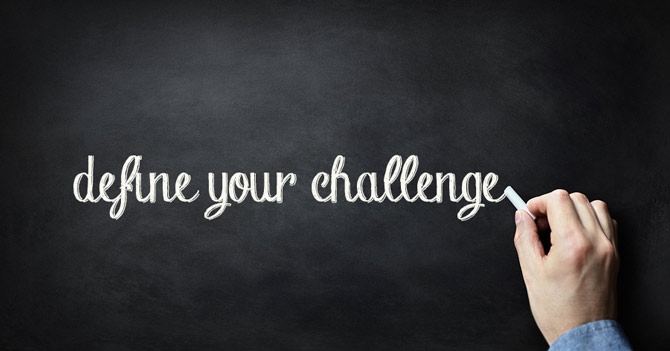
In the quest to understand what’s next for our congregations, we might be inclined to take a Moses approach. Moses ascended Mount Sinai, where he received a revelation from the Lord. The Lord spoke directly to Moses and sent him back to the people with the newly minted Ten Commandments. You might call this vision ex nihilo. Moses had nothing. The Lord told him everything.
You may have had a Mount Sinai moment or two in your ministry. You were driving in your car, tending your garden, taking a walk or pushing through your workout and suddenly you received a flash of inspiration. Perhaps you had to flesh out the idea more fully with the help of others in your circle, but you knew exactly what you needed to do.
Waiting on a Mount Sinai experience, however, might not be the best approach. As leaders, what can we do to better understand where God might be guiding us?
For starters, we can pay attention to problems: not to dwell on them, but to learn something from them.
It’s easy to think of problems as distractions from our “real work,” but what if problems are guideposts that point the way to real work? In Acts 6, the vision that led to the formation of the office of deacon resulted from the apostles’ response to a problem. Greek-speaking widows felt neglected in the daily distribution of food, so the apostles found seven faithful disciples to step into a new role to serve the community.
If you’re wondering about your congregation’s vision, bring a team together to prayerfully reflect on problems that matter and what you can do to solve them.
Resources
Breathing Space: One church’s experiment with guaranteed minimum income
A church offered a “guaranteed gift” of $500 per month for a year to two neighbor-partners as a way to respect recipients’ dignity and give them more agency.
By Rhonda Mawhood Lee
A North Carolina nonprofit helps churches convert property from liabilities into assets
Leaders of a community development corporation believe that even struggling congregations can survive and thrive if members take stock of their assets and put them to use as resources for their communities.
By Yonat Shimron
7 Things to Do When a Church Is in Decline
Addressing decline promptly and honestly is difficult but critical work for congregations in a slump. Objectively evaluating problems, avoiding blame, and charting a clear way forward are some of the steps he recommends.
By Ron Edmondson
To do new things well, congregations must learn
An effective learning process almost always begins with comprehensively yet succinctly naming the challenge at hand, the president of the Indianapolis Center for Congregations says in this interview about his new book.
Interview with Tim Shapiro
Before you go…
Like most of you, I look forward to problem-free days. I enjoy the moments when the team is working collaboratively, and the congregation is excited about the future. But I am learning to seize the opportunities that problems create.
Problems compel me to shift into a creative thinking mode. Leadership is not about organizational maintenance. Leadership is ultimately about discerning organizational direction, navigating adaptive challenges, and moving forward. John Kotter, author and leadership expert, is right that the first step in lasting change is a sense of urgency. And nothing creates a sense of urgency for change like a problem. So the next time you’re about to wish that all your problems would disappear, take a deep breath, pray boldly and seize the opportunity.
You can always reach me and the Alban Weekly team at alban@duke.edu. Until next week, keep leading!

Prince Rivers
Editor, Alban at Duke Divinity




